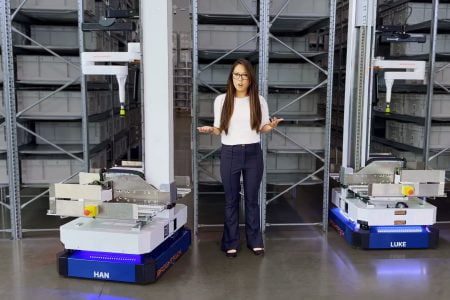8 key considerations before automating order picking in brownfield warehouses
Implementing automation in existing warehouses often involves greater complexity and higher cost than installing them in new ones. But that doesn’t need to be the case.
Now that supply chain issues have mostly settled and consumer spending has shifted back towards services, many retailers and 3PLs are reducing their warehouse space and scaling down their logistics operations. Warehouse utilization rates for 3PLs have fallen to the lowest levels since 2019, and even Amazon is paring back its logistics footprint by shutting down or subletting excess warehouse space.
For many supply chain leaders, the current environment has led to a mindset shift away from expansion and towards optimization. Instead of opening new facilities to meet excess demand, companies are increasingly focused on optimizing and consolidating their existing operations – for example by installing robotic solutions such as Brightpick.
Automating order picking with robots can reduce costs for both new and brownfield warehouses. However, implementing automated fulfillment systems in existing facilities often involves greater complexity and higher costs than installing them in newly built, greenfield warehouses.
Whereas a new facility can be built with automation in mind, many existing warehouses require retrofitting to make them compatible with automated systems. At the same time, it’s critical that the installation does not disrupt daily operations, as shutting down a fulfillment center for weeks or months during installation is not feasible for many companies.
Here are eight key factors to consider before automating an existing warehouse:
- Installation process: The more complex a solution is to install, the higher the risk of disruption to your operations. Lengthy installation times also delay how quickly you start reaping the benefits of automation, which hurts ROI.
- Integration with existing infrastructure: If you have existing conveyors or mezzanines, ripping them out entirely can be prohibitively expensive and disruptive to your operation. Instead, look for solutions that can be integrated with your existing processes.
- Software integration: To ensure a smooth transition and ramp-up, it is critical to integrate an automated system with your existing WMS prior to physical installation.
- Power requirements: Many automated fulfillment systems require high-voltage power to operate, sometimes up to 440-480V. Rewiring and digging up electrical to increase the power capacity can be expensive, so selecting robots that charge on standard 110V power saves costs and shortens installation time.
- Flooring specifications: Many existing facilities don’t meet the strict floor flatness requirements that come with cube and shuttle AS/RS. Having to level the flooring before installation adds cost, deployment time and disruption.
- Height limitations: Some automation solutions need a minimum ceiling height for optimal performance. Existing warehouses with lower ceilings may face restrictions on the types of automation that can be effectively implemented there.
- Fire safety: Fulfillment solutions that extend to tall heights typically require special fire protection and sprinkler systems. Having to replace your existing fire safety systems can add further cost and diminish ROI compared to robotic solutions that don’t require any changes to your warehouse.
- Building codes: Depending on the type of automation you plan to install, you may need to upgrade your facility to meet the current building code requirements, which could add further cost and delay the installation.
To maximize ROI and minimize disruption when installing automation in brownfield warehouses, it is critical to choose a solution that is quick to install, requires minimal changes to your warehouse, and can easily integrate with your existing processes and infrastructure.
Check out how European e-grocer Rohlik Group fully automated order picking in an existing shelf-supported mezzanine without many any changes to their warehouse:
Looking to automate your existing warehouse operations? Learn more about Brightpick and how it can optimize your operations.
Get started with Brightpick

